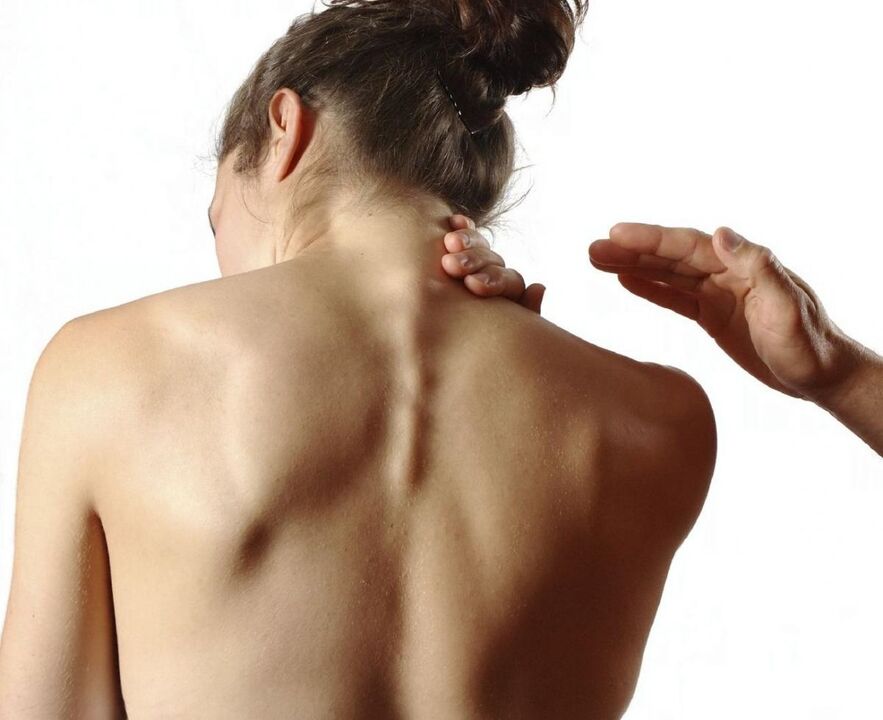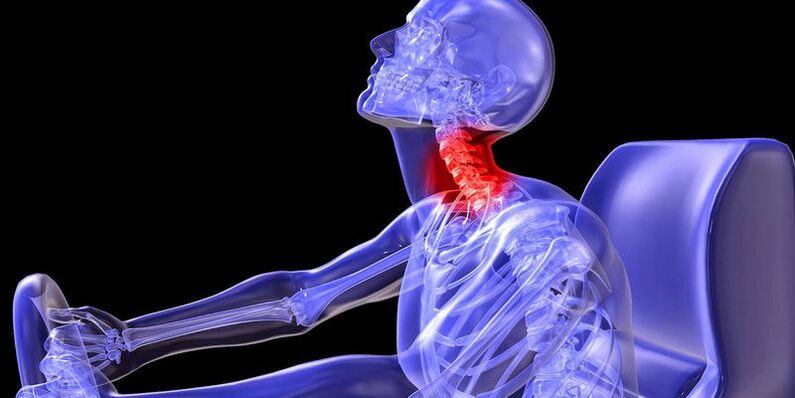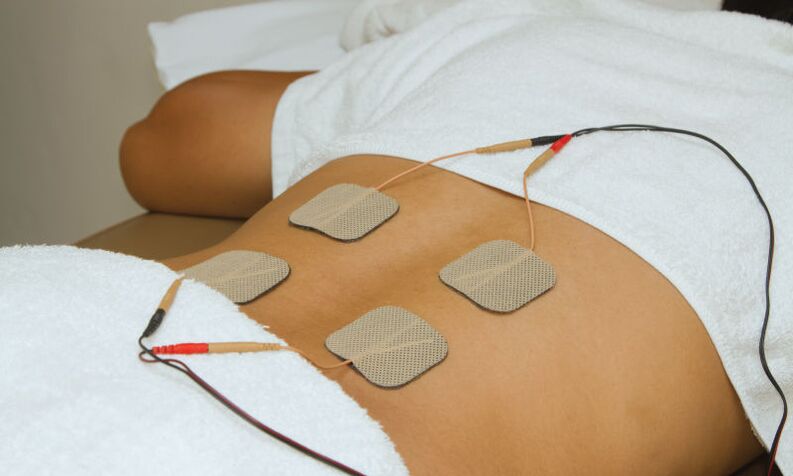
Back and neck pain is cyclical in every person. This may be due to recent physical activity, a sedentary lifestyle, or the presence of serious spinal conditions.
To find out the cause of the pain and possible complications of the disease, you should see your health care provider on time. Often the cause of severe back pain can be a herniated disc or a severely damaged spine.
In elderly patients, low back pain is associated with degenerative diseases of the bone tissue. In the future, the development of the disease will lead to surgical intervention, when the drug treatment will not bring the expected effect. Therefore, you should not delay going to the doctor or determine the pathology independently.
Symptom
Aching sensations begin in the ankle area, then they move to the shoulder and the area between the shoulder blades. In this case, the patient has pain when moving the head or shoulder joint. In the future, such manifestations become stronger, and the patient feels stiff when turning the head.
The main symptoms of a person with a serious pathology of the spine are:
- shoulder and neck muscle fatigue;
- periodic aching sensations in the upper back;
- muscle tension;
- clicking and characteristic sound of joints;
- restriction of free movement of the shoulder that occurs after sleep;
- tingling sensation in soft tissues;
- sharp shooting from different sides of the back;
- discomfort around ligaments and neck.
When these symptoms occur, a person begins to think why the back and neck might be sore and what needs to be done to get rid of the discomfort. In such cases, you should know the underlying cause and initiate treatment promptly.

Reason
The discomfort in the back and neck area in most cases occurs due to spasms of the muscles and accessory vertebrae. They are quite difficult to notice during a physical examination, so a more effective diagnosis is needed. Computed tomography and magnetic resonance imaging are often prescribed, which help visualize even small structural changes. The first technique is well suited for examining the bone formation of the spine, and an MRI allows you to figure out why the muscles and soft tissues are sore.
Muscle spasms
The main reason why it's given in the back is considered muscle spasm. They can occur over time, after a minor spasm develops into a serious muscle strain. The following factors could be the reason:
- staying in an uncomfortable position for a long time;
- improper posture during sleep;
- excellent physical activity and positive actions;
- hypothermia, due to an inflammatory process occurring in the muscle.
Even a small draft can cause muscle spasms. Improper use of air conditioners and high temperature differences lead to inflamed muscle tissue.
Spondylolisthesis
In the case of mechanical damage, the vertebrae are displaced to the vertebra below. As a rule, this phenomenon is observed in the case of severe injuries in a car accident. Degeneration is accompanied by damage to the ligamentous apparatus, muscle strain and encroachment of the joint capsule. The doctor can identify the disease by intense pain when palpation, when turning the head and moving the neck.
Subluxations are treated by surgeons and traumatologists. A person can adjust the vertebrae independently, but only after consulting a highly qualified specialist. In mild cases of pathology, fixation with a collar of Shants is prescribed for a month.

Cervical spine bone tumor
Another cause of neck pain and tenderness can be osteonecrosis. This is a degenerative disease of the spine, which occurs due to a metabolic disorder. The weak muscles of the cervix put a great load on the vertebrae. As a result, the vertebral artery is clamped, and the necessary nutrition of important brain structures does not take place.
The following factors may be the cause of osteonecrosis:
- metabolic disorders;
- sedentary lifestyle;
- genetic predisposition;
- Hypothermia;
- staying in an uncomfortable position for a long time;
- fat.
To prevent the occurrence and further development of osteonecrosis, it is enough to simply perform cosmetic exercises and follow the instructions of the doctor.
Disc herniation
Disc herniation is an inflammatory and degenerative disease with accompanying disc deformity and capsular rupture. Discs play a role of shock absorbers, reducing the impact of mutual destruction of the vertebrae.
Over time, they can lose their elasticity and flexibility, causing severe pain and discomfort. When a herniated disc is present, the patient may experience frequent headaches and muscle aches. Insufficient brain nutrition causes dizziness, weakness and constant drowsiness.
Possible complications
Even minor pain afterward can affect a person's health or cause serious complications that require immediate surgical intervention. Ignoring inflammatory and degenerative diseases leads to pathologies of the vascular system, the appearance of severe sharp pains and disruption of the brain.
After the vertebral artery is blocked, the person experiences weakness, fatigue, visual hallucinations, and other symptoms. If the patient does not go to the doctor in time, it can lead to diseases such as ischemic heart disease, stroke. Over time, they can be fatal.
Diagnosis of disease
After examination by a doctor, one of the methods of diagnostic research is prescribed for a broader understanding of the pathology. With mechanical and vertebral trauma, CT (computed tomography) is prescribed, based on X-rays. X-rays are fixed in all tissues of the body and are displayed differently on the monitor screen. The specialist receives several dozen layered images with three-dimensional images of the bony structures of the spine.
The method has its contraindications. During pregnancy and lactation, you're better off opting for an MRI (magnetic resonance imaging), which uses electromagnetic waves to detect degenerative diseases and soft tissue pathologies. Modern tomography machines allow you to get high-quality images of all parts of your back in minutes and find out why your back and neck hurt.
If the doctor suspects an infectious disease of the central nervous system, polyneuritis, and other diseases of the central nervous system of various etiologies, a lumbar puncture is indicated. This method is widely used in neurology. During the procedure, the patient is given spinal anesthesia or spinal anesthesia when the patient is injected with anesthetic into the subarachnoid space. The injection is made as close to the roots of the spinal nerves as possible.

Medical treatment
When symptoms first occur, most people deal with the problem with anti-inflammatory and pain relievers. To initiate the therapeutic effect, the following drugs are used:
- Analgesics with a pronounced analgesic effect based on metamizole sodium or nalbuphine;
- Non-steroidal anti-inflammatory drugs act directly on the focal point of inflammation and effectively reduce swelling;
- Muscle relaxants reduce the tone of muscle tissue and relieve tension;
- Anesthetic and anti-inflammatory ointments of topical action.
Your doctor may prescribe both tablets and ampoules, which work immediately. As a complex therapy, ointments or gels are prescribed to reduce puffiness and protect chondroprotectors. This group of drugs restores the joints and has an anti-inflammatory effect.
Physiotherapy procedures
In addition to drug treatment, the patient is prescribed physical therapy procedures. It could be therapeutic yoga, special massage or mineral water and mud treatment. To choose the right exercises and gym routines, you need to consult with the doctor who will prescribe the treatment courses. In some cases, stretching exercises can lead to worsening of the condition, so physical therapy alone is not recommended.

Another method of treatment is manual therapy. The specialist will conduct preliminary manual massage to prepare the soft tissues for contact with the skin. Then it goes to the joints and spine. Such manipulations with the help of hands will effectively improve blood flow and relieve pain. The deep impact on the muscles of the back allows you to eliminate tension and swelling.
Some specialists prescribe electrophoresis for patients. This method is based on continuous electrical discharge applied to diseased areas of the body. This method has the following advantages: reduces inflammatory processes in the muscles of the back and neck, eliminates edema and pain, reduces muscle tone, improves blood supply to tissues in the back. The therapeutic effect is observed after the first procedure.

























